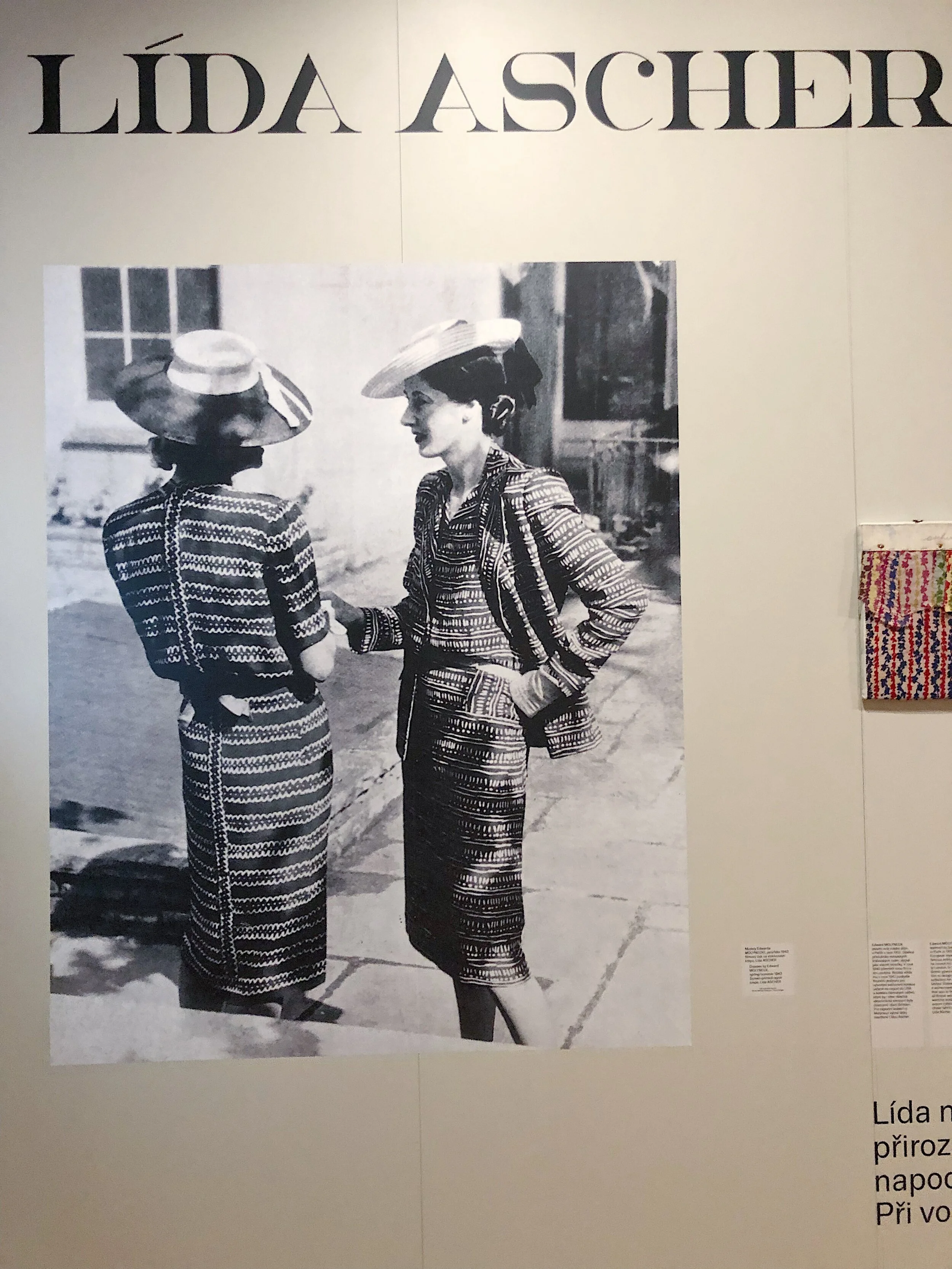Mad Silkman - An Exhibition
Over the spring and summer, The Museum of Decorative Arts in Prague held a fantastic exhibition dedicated to the Ascher family. Doesn't ring a bell? For me neither, but as I found out, Zika and Lída Ascher were one of the most celebrated fabric producers in the last century and surprise surprise, they were Czechs.
I didn't study fashion design, so I really didn't have where to learn about them, so I am thrilled that this exhibition happened. It opened my eyes, inspired me, and made me a little bit more proud of our "golden hands."








Let me tell you a little about what I've learned about them.
Zikund (Zika, in short) was born into a family of textile traders. After his father's death, he had to take care of his family, so he opened a little textile shop. His business grew; he could open more stores in Prague's center and also in Karlovy Vary. His brother Jindřich also decided to join the industry and opened his store focused more on ribbons, scarves, etc..
As the family was of Jewish descendants, their successful business expansion had to come to an end with the Nazi invasion of Czechoslovakia in 1939. That year he also married his wife Lída, and they both left to Norway for their Honeymoon from which they haven't returned. After a few days, they have settled in London.
Zika and Lída had to build all again, from scratch. He had an in-depth knowledge of the fabrics in the western market, but he was now in a country that was the homeland of fabrics. He had to have a unique concept. This idea brought him to a concept of Czech fabric manufacturer Josef Sochor, who was creating fabrics with prints done in collaboration with Czech artists. As Nazis had also chased Sochor's family, fate had brought them into Ireland, where they built a small weave mill.
Ascher took Sochor's concept to the new level, as he started a collaboration with at the time well-known artists for their silk squares, while Lída also started designing fabrics. They collaborated with artists like Henry Moore, Graham Sutherland, Pablo Picasso, Henri Matisse, André Derain, and many more.
After WWII, Ascher came with a unique concept of making dresses out of parachutes. Natural silk was short in stock after the war; it was a great idea to use nylon fabrics used for parachutes. Zika figured out that this light fabric might be used for dresses if printed with beautiful decor. It's a perfect example of upcycling after the war.
As Ascher's business grew, they started producing silk fabrics for Britain' s fashion designers and soon enough French Designers we know today.
Between their customers were Christóbal Balenciaga, Pierre Cardin, Pierre Balmain, Christian Dior, and others. Zika's fabrics can be seen today on those companies' famous dresses.
The business expanded to other materials like wool, paper, and Lída Ascher even started her own fashion line of easy to wear outfits such as pantaloons, ponchos, and dresses.
The line was called Lída Ascher Boutique and was simply created because Zika told Lída to find a use for leftover fabrics in their storage.
Her creativity in the combination of practicality gave life to a very successful collection between young in years and at heart.
In the '70s, Zika also started experimenting with many other materials like paper, lace plastics, etc.. This period was defined by bold prints, massive flowers in colorful variations, and romantic gypsy style.
That era was one of the near-end periods of the brand, and we can say it died with its founders. But there's a legacy to their work, and I am proud people from my country participated in rising of fashion.
Unfortunately, The Mad Silkman exhibition is already closed. Still, if you are interested in learning more about the Ascher family, there's an excellent book done by the authors of the exhibition and Zika's son.
Plus, there's plenty of resources online if you google.











